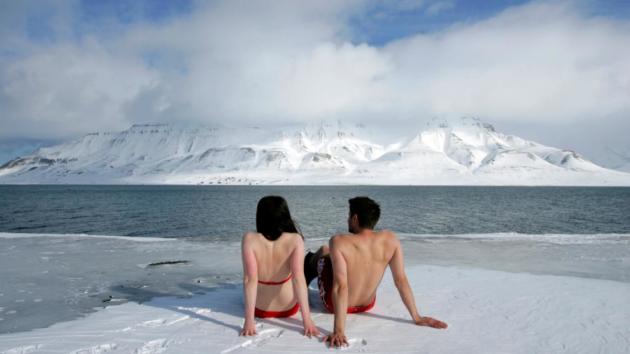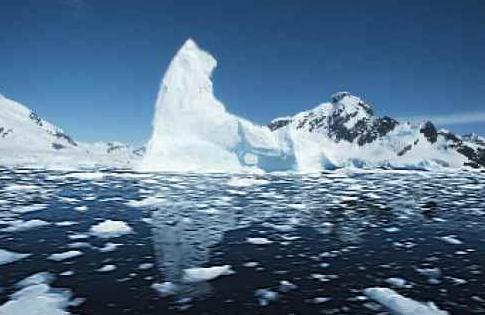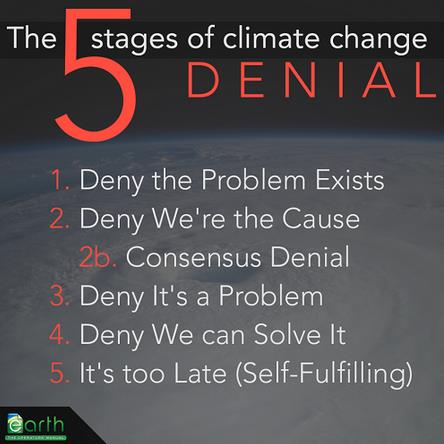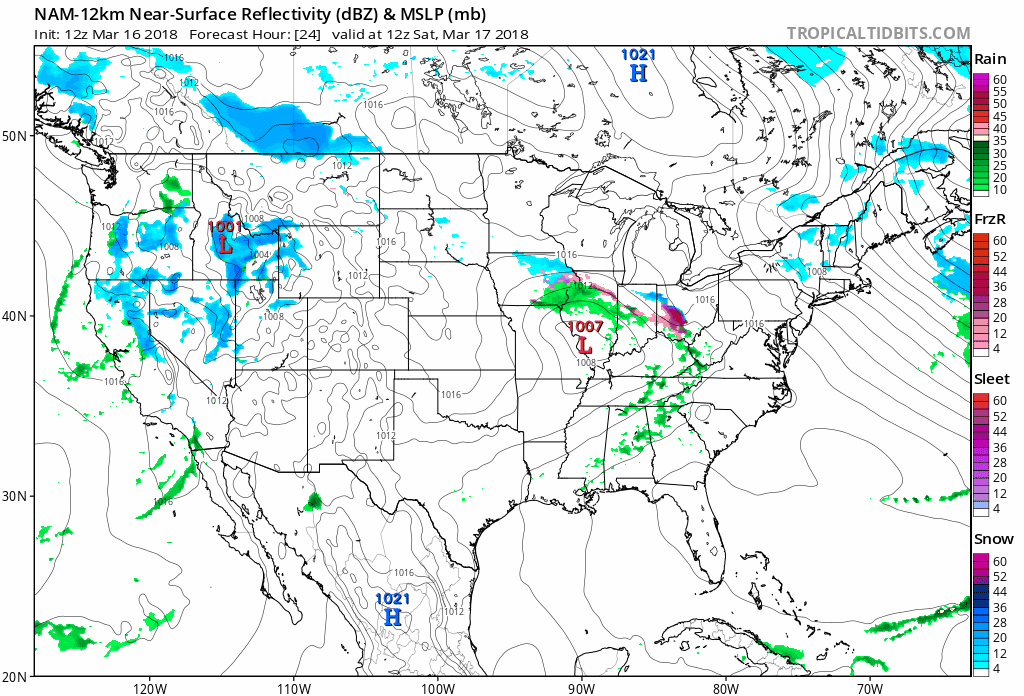.jpg)
March in Minnesota: A Month Like No Other?
Welcome to the meteorologically manic month of March. It’s like Mother Nature tried to cram an entire year’s worth of weather into 31 days.
Think I’m kidding? Temperatures have ranged from -27F (1948) to 86F (most recently in 1986). Minnesota has seen March tornadoes; blizzards are rare – but possible. River flooding & wildfires until things green up? Did I mention ice dams?
No hurricanes or earthquakes, if that’s of any consolation!
NOAA data highlighted at The New York Times shows that Minnesota winters from 1989 to 2018 were 3F warmer than a 20th century baseline. We just experienced an average winter. Average feels like punishment, since most winters are trending milder.
Much of the snow in your yard will be gone by Monday with weekend temperatures consistently above freezing. There’s an outside shot at 50F today, again Sunday, before cooling off a little next week. Another mild surge late next week brings a smear of showery rain by Friday; possibly ending as flurries next Saturday.
The sun is now too high in the sky for snow to linger. Spring is coming, reluctantly.
Relatively Quiet. Residents of New England are still digging out from 1-2 feet of snow, while a Pacific storm with much-needed rain and snow pushes into the western USA. A persistent longwave ridge of high pressure means relatively quietweather for Minnesota Saturday and Sunday. 12km NAM Future Radar: NOAA and tropicaltidbits.com.
Few Degrees Above Average. Average high temperatures at MSP are around 41F now; and we’ll be above average this weekend and late next week as spring makes a pass at Minnesota. I still see a cool bias into at least early April – no rush of 60s or 70s shaping up anytime soon. Twin Cities ECMWF numbers: WeatherBell.
Updated Flood Threat. Here’s an excerpt from NOAA’s just-released Spring Outlook: “…Through May, moderate flooding is likely in the lower Mississippi Valley, parts of the Ohio River Basin, the Illinois River Basin, and in parts of the lower Missouri River Basin. Minor flooding is possible in parts of the Columbia River and upper Missouri River Basin as above-normal snowpack in the Northern Rockies melts. The flood risk outlook is based on a number of factors, including current conditions of snowpack, drought, soil moisture, frost depth, streamflow and precipitation. Local heavy rainfall, especially associated with thunderstorms, can occur throughout the spring and lead to flooding even in areas where overall risk is considered low...”
Map credit: “2018 U.S. Spring Flood Outlook: This map depicts the locations where there is a greater than 50 percent chance of moderate or minor flooding during March through May, 2018.” (NOAA).
Snowfall Trends. Thanks to Brian Brettschneider for sharing this graphic, showing (net) increases or decreases in annual snowfall in the last 30 years. There’s a fairly dramatic decrease in winter snow from Wichita Falls and Little Rock to Nashville and Norfolk. Closer to home nowfall has actually increased over western Minnesota, but fallen from near St. Cloud to the Twin Cities and Mankato.
After the Storm. Many people wrote checks, which is terrific, but I have even more respect and admiration for people who were able to put their lives on hold and head down to Puerto Rico and the U.S. Virgin Islands to help out after Hurricane Irma and Maria. Popular Mechanics has their amazing story: “When hurricanes Irma and Maria destroyed hundreds of homes and displaced thousands of people in the U.S. Virgin Islands last fall, some people sent money and supplies. A smaller group showed up. They left their lives and families, dealt with occasional awkwardness and tetanus shots, to see what they could do to help. This is their story...”
Photo credit: Drew Alston.
In Virginia, Black Clergy Lead Charge Against Fossil Fuel Lobby: From Climate Nexus: “Black communities in Virginia, led in large part by faith leaders, are galvanizing against fossil fuel lobby messaging specifically targeted to them, according to a new report from Grist. A Koch-funded gospel concert to surreptitiously promote oil and gas held in Richmond in 2016 generated significant backlash in the community, activists say–and encouraged many community members and faith leaders to reconsider how the fossil fuel industry targets and exploits black Americans. “God didn’t put me on this earth to pimp death for profit,” Rev. Paul Wilson, who took up arms against environmental racism after the concert and was recently arrested protesting the Atlantic Coast Pipeline, told Grist. “That’s what the Kochs and these energy folks are doing to my people now. It’s up to us in the church to stop it.” (Grist)
Unplugging from the Internet Nearly Destroyed Me. I like the idea of tapering, but totally disconnecting from The Matrix? Good luck with that. A link to a harrowing story at The Atlantic is here.
Finland is the World’s Happiest Country. Here’s an excerpt from CNN: “…The United States landed in 18th place, dropping four spots from last year. “Governments are increasingly using indicators of happiness to inform their policy-making decisions,” said economics professor Jeffrey D. Sachs, director of Columbia University’s Center for Sustainable Development and report co-editor. “US policymakers should take note. The US happiness ranking is falling, in part because of the ongoing epidemics of obesity, substance abuse and untreated depression.” Other major powers didn’t crack the top 10 rankings, either. Germany came in 15th place, while the United Kingdom was 19th. Japan came in 54th place, Russia came in 59th place and China came in 86th…”

Sorry, There is No Such Thing as a “Normal Person”. I rest my case, your honor. Here’s a clip from Quartz: “…There’s no one right way to be a human, and that applies to mental as well as physical states. That’s why neuroscientists are advocating for more recognition of the bizarre normalcy of all complex humans in psychiatry—an argument that can help all of us take a bigger-picture view. A new study published in Trends in Cognitive Science on Feb. 20 debunks the myth of normalcy in people and animals. “The Myth of Optimality in Clinical Neuroscience” (paywall), by Avram Holmes and Lauren Patrick of the Yale University psychology department, uses evolution to show that uniformity in our brains is totally abnormal. What’s much more common in life, during its 3.5 billion years of evolving existence on Earth, is range and change, variety in and among creatures and habitats...”
Photo credit: “Crocodile taunting isn’t a normal job for a regular joe. But it’s not the sign of a diseased mind.” (Reuters stringer/2015 Wenling, China zoo).
Does Tech Need Silicon Valley? It turns out that many start-ups are flourishing the Midwest, a trend that may accelerate as costs continue to escalate in Silicon Valley. Here’s a clip from an interesting read at California Sunday Magazine: “… Poring over the available data, Case discovered that plenty of Midwestern and Southwestern cities were leveraging tax incentives to stanch local brain drain, and a few, such as Pittsburgh and Indianapolis, were cultivating their own robust startup scenes. The talent wasn’t all on the coasts. Nor, for that matter, were the jobs. Metro areas like Detroit and Atlanta were adding jobs in tech services and software at surprisingly steady rates. But the requisite venture capital, that ultimate driver of any startup economy, was missing. The vast majority — 80 percent — of VC investment goes to the coasts, Case pointed out, referring to a report from the Martin Prosperity Institute in Toronto. The other states have to fight for the scraps. “It was pretty clear there was a problem here and an opportunity...”
Photo credit: “The new office space of Memory Ventures, a photo-digitization startup. The founder, Anderson Schoenrock, moved to Indianapolis from Los Angeles.”
Newsflash! Robots Can’t Live Without Us. A robotic machine that flips hamburgers – is it an omen of a world that doesn’t need human workers? Not so fast, argues a story at USA TODAY: “On its surface, the idea sounds like a no-brainer: Replace young men and women who can’t take the heat and monotony of standing over a hot griddle — and end up quitting in weeks, if not months — with a robot. A $100,000 robot can grill hamburgers to perfection all day long. It never takes a break, or a sick day while turning out as many as 2,000 identical burgers a day. Flippy the robot opened for business Monday at the Caliburger restaurant in Pasadena with huge fanfare. From here to England, reporters from around the world marveled at the machine that threatened to take away human jobs while improving productivity and consistency…”
Photo credit: “Patrons at the Pasadena Caliburger restaurant are greeted by a sign saying that Flippy, the burger flipping robot is coming soon.” (Photo: Jefferson Graham).
John Skipper Details His ESPN Exit and a Cocaine Extortion Plot. A story at The Hollywood Reporter is worth a read: “The former network chief goes public in an interview with The Hollywood Reporter about the real reason behind his abrupt departure from Disney after 27 years, a confession to Bob Iger and his hope to work in sports media again. On Dec. 18, 2017, John Skipper suddenly resigned as president of ESPN and co-chairman of Disney Media Networks, citing his desire to seek treatment for what he called a “substance addiction.” The announcement shocked employees at ESPN and its parent company, and was met with disbelief and confusion throughout the sports and media worlds…”

Here’s How Cycling Can Slow Down the Aging Process. Bicycling Magazine has the story: “…They found that while cycling didn’t protect against every single measure of immune-system decline, the cyclists had white blood cell levels comparable to those of the younger control group—meaning that their immune systems were acting “younger.” These studies are only two of many that demonstrate how physical activity like cycling can slow the aging process. One 2017 study found that high-intensity interval cycling increased mitochondrial capacity—a big deal when it comes to aging, as the decline of these organelles leads to the onset of age-related disease. Another study from last year found that regular vigorous exercise protected telomere length. Shortened telomeres are what cause cell death—i.e., aging—and those who exercised saved themselves up to nine years of cellular deterioration.”
File image: Harvard School of Public Health.
Family That Found 7 Baseball Cars Worth Millions Finds 8th. Some people have all the luck, according to a story run by The Associated Press: “What could be better than becoming a millionaire after finding seven vintage baseball cards while cleaning out your late great-grandfather’s house? How about finding an eighth? The family that two years ago made one of the greatest finds in sports collectibles history when they found seven Ty Cobb baseball cards printed between 1909 and 1911 have now found one more in the matching set. “It falls under the category of ‘you can’t make this stuff up,’” said Joe Orlando, president of Professional Sports Authenticator of Newport Beach, California...”
Rain Triggers Fires in Denver Area. Rain? Who knew? This is the first time I’ve heard of this phenomenon, highlighted in a story at CBS Denver: “…Officials were forced to close Interstate 270 in both directions for several hours Thursday night when power poles near the intersection with Interstate 70 caught fire. The fires knocked down some of the poles. Approximately 50,000 people lost power due to the situation, most for only a short time. Denver’s official weather station at Denver International Airport recorded .04 inches of rain on Thursday. Xcel Energy said after similar fires a year ago that after weeks of dry weather power poles can accumulate gunk that comes from dust, debris and other material. Then when it rains, it can potentially spark a fire.”
Image credit: CBS.
2″ snow on the ground at Twin Cities International Airport.
41 F. high in the Twin Cities on Friday.
41 F. average high on March 16.
40 F. high on March 16, 2017.
March 17, 2012: The Twin Cities hits 80 degrees, a new record for St. Patrick’s Day and the warmest temperature during the warmest March on record. Amazingly, the high also reached 79 on March 16, 18, and 19 this year.
March 17, 1965: The Great St. Patrick’s Day Blizzard hits northern Minnesota. Two feet of snow dumped at Duluth. 19 inches at Mora.
SATURDAY: Sunny and mild. Winds: E 3-8. High: 49
SATURDAY NIGHT: Clear to partly cloudy. Low: 31
SUNDAY: High clouds increase, still pleasant. Winds: SW 3-8. High: 47
MONDAY: Cooler as clouds thicken up. Winds: NE 8-13. Wake-up: 30. High: near 40
TUESDAY: Chance of a very light mix. Winds: E 5-10. Wake-up: 25. High: 37
WEDNESDAY: Patchy clouds, few flakes around. Winds: SE 5-10. Wake-up: 22. High: 40
THURSDAY: Partly sunny, milder breeze kicks in. Winds: SE 10-15. Wake-up: 25. High: 47
FRIDAY: Windy with a chance of rain. Winds: E 10-20. Wake-up: 35. High: 46
Climate Stories…
Climate Change Affecting Taste and Cost of Beer. No, not the beer! WQAD.com explains: “On St. Patrick’s Day, many celebrate with good music, food, and drinks. According to research by one investment firm, March 17 ranks fourth behind New Year’s Eve, Independence Day, and Christmas Day in the amount of daily alcoholic drinks consumed in the U.S. As the world’s climate warms, an interesting effect is happening on beer’s core ingredients: hops, water, and barley. Hops are affected by heat and drought, and with 99 percent of U.S. hops grown in Washington, Oregon, and Idaho (with over 70 percent grown in Washington alone), the drier climate developing in the West will impact production…”

None Like it Hot: Warmer Winters Worry Arctic Scientists. Here’s an excerpt from a Reuters story: “…The Arctic is warming faster than the rest of the planet, something Norway’s Svalbard archipelago – where Longyearbyen is located – is seeing firsthand, said Kim Holmen, international director of the state-funded Norwegian Polar Institute (NPI). “It has been 86 consecutive months where every month has been above normal (temperatures),” he told the Thomson Reuters Foundation in his office at the University Centre in Svalbard (UNIS). “This type of weather was highly unusual,” the scientist said, gesturing at the rain lashing his office window. “Now we have it every winter and several times a winter.” Svalbard’s winter temperatures have increased by 2 to 2.3 degrees Celsius (3.6 to 4.1 degrees Fahrenheit) per decade since 1979, said Ketil Isaksen, Oslo-based senior scientist for the Norwegian Meteorological Institute (MET Norway)…”
File image: Reuters.
Natural Disasters Are Costing Farming Billions of Dollars a Year. Here’s the intro to a story at Bloomberg Markets: “Natural disasters from droughts to floods are costing farmers in poorer countries billions of dollars a year in lost crops and livestock, and it’s getting worse thanks to climate change. Agricultural losses from weather events in developing nations totaled $96 billion in a decade through 2015, with Asia accounting for half the amount, according to the United Nations’ Food & Agriculture Organization. In addition to climate issues, sectors from forestry to aquaculture face risks from problems such as market volatility, diseases and conflicts, the FAO said in a report. “This has become the ‘new normal,’ and the impact of climate change will further exacerbate these threats and challenges,” FAO Director-General Jose Graziano da Silva said in a statement. Natural disasters have become more frequent and intense since the 1980s, presenting challenges for about 2.5 billion people who depend on agriculture, the FAO said…”
After Back-to-Back Climate Disasters in 2017, FEMA Ditches Climate Change in Strategic Plan: Headlines and links via Climate Nexus: “The Federal Emergency Management Agency has removed references to climate change from its new strategic plan, released Thursday. The 2018-2022 planning document, released after the costliest year of climate and weather disasters in the United States, also fails to mention global warming, sea-level rise, extreme weather, or other terminology associated with scientific predictions of the impacts of climate change. The document instead vaguely references “rising natural hazard risk,” warns of “increasingly complex and difficult to predict” disasters, and advises that “pre-disaster mitigation works.” FEMA Administrator Brock Long told Bloomberg last summer that climate change is a “political hot button that…keeps us from having a real dialogue.” (Bloomberg, NPR, Mother Jones, Axios).
It’s 50 Years Since Climate Change Was First Seen. Now Time is Running Out. Here’s an excerpt of an Op-Ed at The Guardian: “…The damage is all around us, from hurricanes on steroids – scientists attribute 15-40% (8in-24in) of the epic rain of Hurricane Harvey to climate change – to California’s deadly wildfires which were set up by five years of drought, followed by record snowfall, then record heat that turned huge areas of the state into tinderboxes. In 2017 there were 16 separate billion-dollar disasters in the US, resulting in a total of $306bn of damages, nearly $100bn more than the second highest year 2005 (Katrina). While technically climate change did not “cause” these disasters, most of the carnage was aggravated in some way by climate change and the fossil fuel emissions that cause it in the first place…”
File image: NASA ISS.
Weathering Trump’s Skepticism, U.S. Officials Still Fighting Global Warming. Here’s an excerpt from Reuters: “…But there is a disconnect between what Trump says at home and what his government does abroad. While attention has been focused on Trump’s rhetoric, State Department envoys, federal agencies, and government scientists remain active participants in international efforts to both research and fight climate change, according to U.S. and foreign representatives involved in those efforts. “We really don’t detect any change with the Americans,” said one of the officials, Aleksi Härkönen of Finland, who chairs the eight-nation Arctic Council’s key group of senior officials, who are charged with protecting a region warming faster than any other on Earth. Over the past year, the United States has helped draft the rulebook for implementing the Paris climate accord, signed international memoranda calling for global action to fight climate change, boosted funding for overseas clean energy projects, and contributed to global research on the dangers and causes of the Earth’s warming…”

CLIMATE IMPACTS: More headlines and links via Climate Nexus: “The fast-melting Arctic is already messing with the ocean’s circulation, scientists say (Washington Post $), summer daze: hot season will be two months longer in eastern Mediterranean by 2100, study says (USA Today), Easter Island is eroding (New York Times $), coral reefs at severe risk as world’s oceans become more acidic (USA Today), this is what a West without water will look like.” (Mother Jones).
Biofuels Can Help Solve Climate Change, Especially With a Carbon Tax. So says Dr. John Abraham at The University of St. Thomas, writing for The Guardian: “…The term “biofuels” has many meanings, but basically they are grown fuels (like corn ethanol) that we can use instead of fossil fuels (like petroleum). While biofuels can be any fuel produced from plant material, historically they have been produced from food crops such as corn and soy. But, new technologies are enabling biofuel production from non-edible gases, wood, and other plant waste material. The beauty of biofuels is that they suck carbon dioxide out of the air as they grow. When we burn them in our automobiles, we release carbon dioxide, but it is the same carbon that the plants absorbed while growing. Just on that basis, biofuels appear to be zero net emitters…”
Photo credit: “Willow trees grown for biofuel next to a biofuel power station in Lockerbie, Scotland, UK.” Photograph: Ashley Cooper / Alamy/Alamy.
Schwarzenegger Wants to Sue Big Oil for Climage Change. Does He Have a Case? Plenty of money for the lawyers in all of this. Here’s a clip from a story at Climate Liability News: “Former California governor Arnold Schwarzenegger said he wants to sue oil companies for first-degree murder, a move that will focus the public’s attention on their role in climate change but one that will face considerable hurdles in court. Schwarzenegger, speaking at South by Southwest (SXSW) at an event hosted by Politico, said he had been talking to law firms about suing Big Oil producers because they knew about the public health risks of climate change and should pay for the costs. “We’re going to go after them, and we’re going to be in there like an Alabama tick. Because to me it’s absolutely irresponsible to know that your product is killing people and not have a warning label on it, like tobacco,” he said during the live podcast on Sunday…”

Fear, Fun or Facts? Researchers Look at What Drives Climate Action. Here’s a snippet from another post at Reuters that caught my eye: “…The more matter-of-fact weatherman most successfully helped participants understand the reasons behind climate changes, according to study participants. But humor was most effective in inspiring people aged 18-24 to take action themselves against climate change, such as joining rallies and volunteering for organizations, Niederdeppe said. Nonetheless, it was fear that most motivated a desire for broad action on climate change, prompting watchers to say they would contact officials to see if they supported environmentally friendly policies, the study said. That was true across all the age groups surveyed, he said, not just 18-24-year-olds. After looking at the results, the researchers now aim to try delivering climate change information with a satirical bite to see if it produces even greater drive for action among viewers, Niederdeppe said…”

.jpg)




